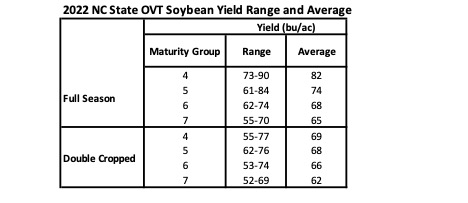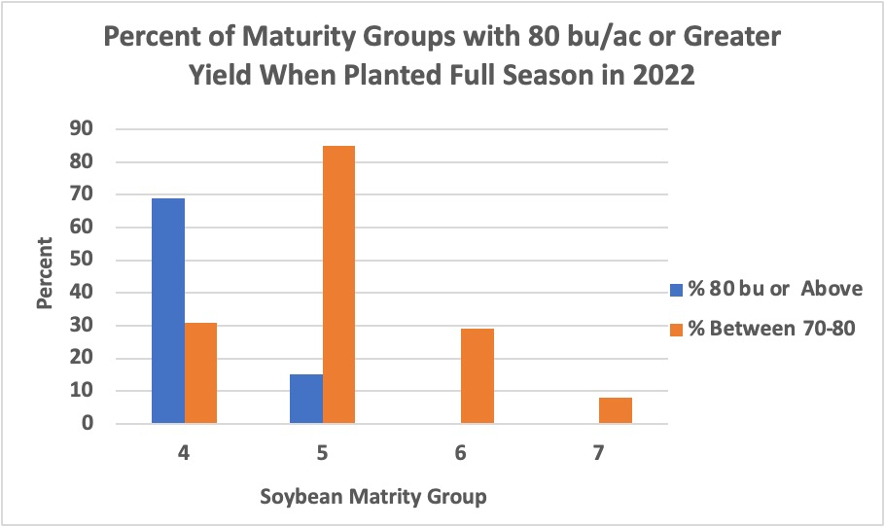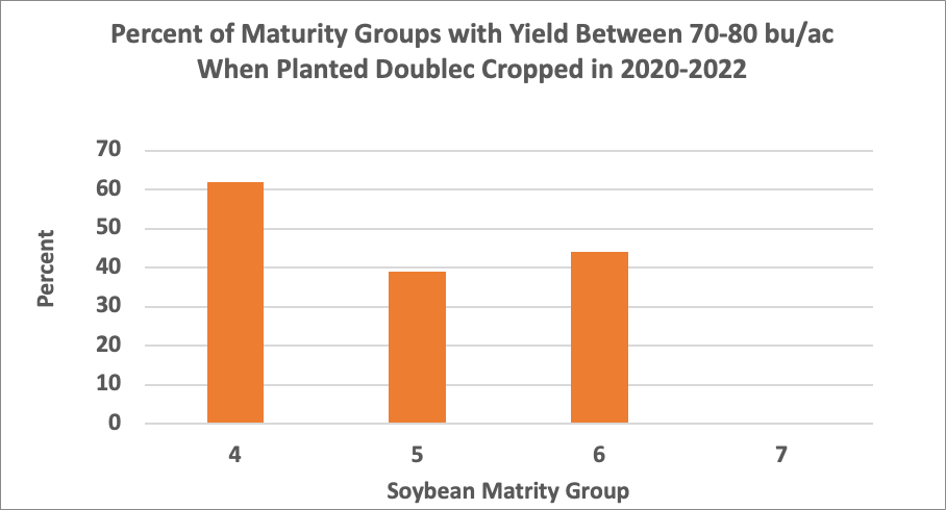Early Soybean Maturity Groups Have Greater Yield Potential
go.ncsu.edu/readext?903988
en Español / em Português
El inglés es el idioma de control de esta página. En la medida en que haya algún conflicto entre la traducción al inglés y la traducción, el inglés prevalece.
Al hacer clic en el enlace de traducción se activa un servicio de traducción gratuito para convertir la página al español. Al igual que con cualquier traducción por Internet, la conversión no es sensible al contexto y puede que no traduzca el texto en su significado original. NC State Extension no garantiza la exactitud del texto traducido. Por favor, tenga en cuenta que algunas aplicaciones y/o servicios pueden no funcionar como se espera cuando se traducen.
Português
Inglês é o idioma de controle desta página. Na medida que haja algum conflito entre o texto original em Inglês e a tradução, o Inglês prevalece.
Ao clicar no link de tradução, um serviço gratuito de tradução será ativado para converter a página para o Português. Como em qualquer tradução pela internet, a conversão não é sensivel ao contexto e pode não ocorrer a tradução para o significado orginal. O serviço de Extensão da Carolina do Norte (NC State Extension) não garante a exatidão do texto traduzido. Por favor, observe que algumas funções ou serviços podem não funcionar como esperado após a tradução.
English
English is the controlling language of this page. To the extent there is any conflict between the English text and the translation, English controls.
Clicking on the translation link activates a free translation service to convert the page to Spanish. As with any Internet translation, the conversion is not context-sensitive and may not translate the text to its original meaning. NC State Extension does not guarantee the accuracy of the translated text. Please note that some applications and/or services may not function as expected when translated.
Collapse ▲While climatic factors are often indeed the determining factor for yield within Eastern North Carolina, the weather and climate conditions are beyond an agricultural producer’s control. However, two significant factors of soybean yield that agricultural producers can control are the selection of variety and planting date.
NC State research has repeatedly enforced that earlier planting is not only possible, but prudent. And, to be clear, these replicated studies have begun planting in mid-March. As such, each grower should evaluate planting practices to plan for early planting of soybean if high yield is desired. All full season soybeans should be targeted to be planted by early May. Data also show that planting earlier maturing varieties favor higher yield. Note the yield range and average for 2022 data below.
The second factor, selection of variety is a bit more complicated. Selection of a variety should include resistance to known disease or nematode populations, desired harvest date, and storage/transport considerations. High yield (80 bu/ac or higher) is possible with many varieties so these other factors, rather than simply yield, should be considered a priority. To select parameters that fit your operation (soil type, days above 95 degrees F, population, disease resistance, etc.) simply utilize the NC Variety Selection Tool.
To begin discovery, first examine which soybean maturity group seems feasible. Data consistently shows that high yield is most likely with earlier maturing varieties when planted early. The chart below shows the percent of varieties tested in 2022 divided into two yield ranges: 1) 80+ bu/ac (blue); and, 2) between 70-80 bu/ac (orange) for full season planted soybeans. Note that almost 70% of Maturity Group IV soybeans yielded 80 bu/ac or greater compared to only about 15% of Maturity Group V. No soybeans within Maturity Groups VI or VII yielded this high. Note that a bit over 30% of the Maturity Group IV were between 70-80 bu/ac. Thus, 99% of Maturity Groups IV & V yielded at least 70 bu/ac.
When examining multiple year data, this trend continues. Note that when using 2020-2022 data 100% of soybeans within Maturity Group IV yielded 80 bu/ac or greater. This is far greater than any other maturity group. When examining yield between 70-80 bu/ac Maturity Groups V & VI had about 65-75% of the varieties with yield in this range.
While this again, emphasizes the higher yield potential of earlier maturity groups, it is also critical to understand a bit more about the data. First, for any given year, it is possible to have 50 or more varieties in a trail. Those that do not have yield above about 70 bu/ac or critical disease resistance are likely to be abandoned. As such, over the years, the number of varieties consistently performing well decreases. As such, data with three years may show only 15-20 varieties.
Another critical factor is that this data represents averages. As such, it is possible to find 80-100 bu/ac yield among Maturity Groups V- VII. These charts simply show the yield of varieties tested. This is critical to understand. The data show that the likelihood of high yield is greater with earlier maturity groups. However, if early maturity groups simply do not fit in your risk or management, it is still possible for high yield with good selection. Simply examine the data from the NC Varietal Selection Tool
It is also critical to note another factor. Those seeking to increase yield with any type of yield enhancement product are less likely to realize results on later maturity groups than for earlier ones. Simply put, the climatic factors, growing environment and genetic breeding is simply not quite as favorable than earlier planting and earlier maturity groups.
For those planting double cropped behind wheat or face later than desired planting for whatever reason, note that such yield above 80 bu/ac is not typically possible. When averaging data over the last three years, no maturity group had 80 bu/ac when planted late. The chart below shows the percent of varieties tested that yielded between 70-80 bu/ac. Note that earlier maturing varieties are still slightly favored, but maturity groups V & VI are similar. Maturity Group VII did not have any varieties above 70 bu/ac.







